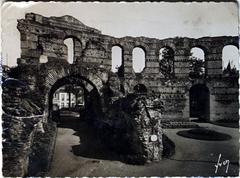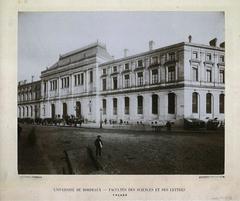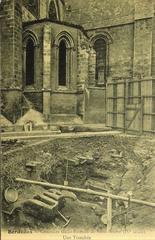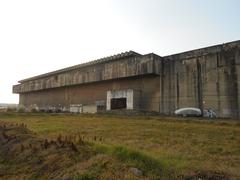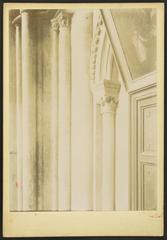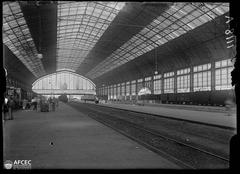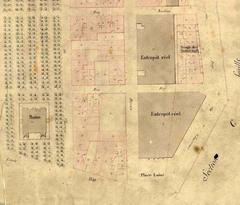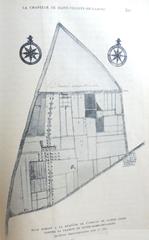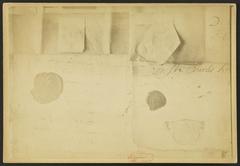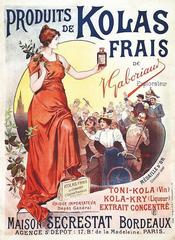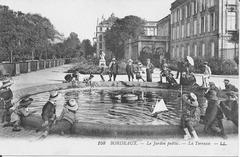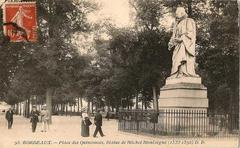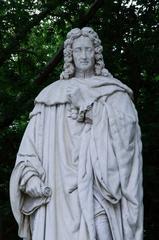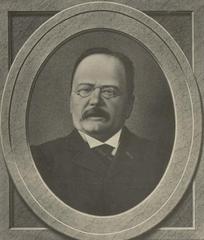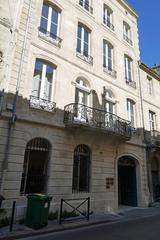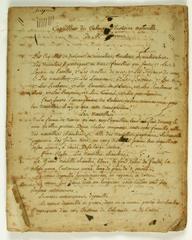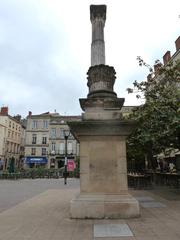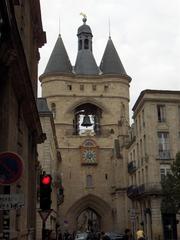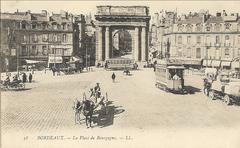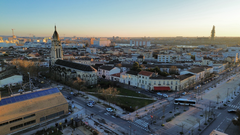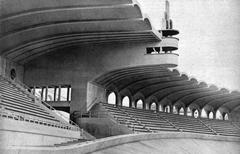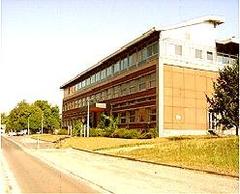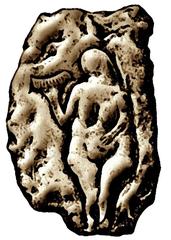
Castle Trompette Visiting Hours, Tickets, and Bordeaux Historical Sites Guide
Date: 04/07/2025
Introduction
Château Trompette, once a formidable fortress, remains a cornerstone of Bordeaux’s historical narrative, even though the original structure no longer exists. Its legacy continues in the vibrant Place des Quinconces, a public square that now occupies the former site. This guide provides comprehensive information about the history, cultural significance, and practical aspects of visiting the site, along with nearby attractions and accessibility details. Whether you are a history enthusiast, a traveler eager to explore Bordeaux’s rich past, or simply curious about the city’s evolution, this article will help you make the most of your visit.
For further reading and official resources, see vieux-bordeaux.fr, france-voyage.com, and the Bordeaux Tourism website.
Table of Contents
- Introduction
- Historical Overview: Origins and Construction
- Architectural Features and Military Role
- Political and Social Impact
- Decline and Demolition
- Archaeological Remains and Legacy
- Visiting Château Trompette / Place des Quinconces: Hours, Tickets, and Accessibility
- Nearby Attractions
- Travel Tips for Visitors
- Frequently Asked Questions (FAQ)
- Conclusion
- Further Reading and Official Sources
Historical Overview: Origins and Construction
Château Trompette was constructed in the mid-15th century, following Bordeaux’s return to French rule after the Hundred Years’ War. Commissioned by Charles VII and supervised by Jean II de Bourbon, the fortress was strategically located along the Garonne River to assert royal authority and control access to the city (vieux-bordeaux.fr; fr.wikipedia.org). The castle’s pointed bastion faced the river, symbolizing the monarchy’s dominance over a historically autonomous city (france-voyage.com).
Architectural Features and Military Role
Originally designed as a medieval fortress, Château Trompette featured thick ramparts, bastions, and a glacis. It was equipped with artillery aimed both at potential invaders and at the city itself to deter rebellion (french-baroudeur.com). Under Louis XIV, Vauban modernized the fortress into a bastioned citadel, expanding its defenses and demolishing adjacent structures. The final fortifications were completed in 1675 (vieux-bordeaux.fr).
Political and Social Impact
The fortress quickly became a symbol of royal authority and was deeply unpopular among the Bordeaux population, who had long enjoyed privileges under English rule. Known as the “Bastille Bordelaise,” its presence was both a deterrent to unrest and a constant reminder of subdued local autonomy. Château Trompette played a key role in suppressing uprisings, notably during the Wars of Religion and the Ormée revolt of the 1650s (french-baroudeur.com; france-voyage.com).
Decline and Demolition
By the late 18th century, Château Trompette’s military importance had faded. Louis XVI authorized its sale in 1787, and it was demolished between 1816 and 1820. The site was transformed into Place des Quinconces, now one of Europe’s largest city squares, signaling Bordeaux’s move toward urban openness and civic life (frenchmoments.eu; bordeaux-citytours.com).
Archaeological Remains and Legacy
Though the fortress no longer stands, its influence is still visible in Bordeaux’s urban layout. Rue du Château Trompette connects Allées de Tourny with Place des Quinconces (vieux-bordeaux.fr). Remnants of the foundations were uncovered during tramway construction in 2006 (france-voyage.com). A detailed scale model of the castle is displayed at the Musée des Plans-Reliefs in Paris’s Hôtel des Invalides.
Visiting Château Trompette / Place des Quinconces: Hours, Tickets, and Accessibility
Hours and Tickets
- Place des Quinconces is a public square open 24/7, with no entrance fee.
- Château Trompette itself no longer exists, so there are no tickets or official visiting hours for the fortress.
- Musée des Plans-Reliefs in Paris exhibits a scale model of the castle; check their website for opening times and ticket information.
Accessibility
- The square and surrounding area are fully accessible, with paved paths and low-floor trams (Lines B, C, and D, Quinconces stop).
- Public restrooms and accessible facilities are available nearby.
- The Bordeaux Tourist Office provides detailed accessibility guides, large-print and braille materials, and adapted tours for visitors with reduced mobility (Bordeaux Accessibility Guide).
Nearby Attractions
- Monument aux Girondins: Iconic column and fountain commemorating the Girondins of the French Revolution.
- Grand Théâtre de Bordeaux: 18th-century neoclassical opera house, a short walk from the square.
- CAPC Museum of Contemporary Art: Accessible museum in a former warehouse.
- Garonne River Cruises: Depart from nearby docks for scenic views of Bordeaux (River Cruises).
- Vieux Bordeaux: The historic old town, featuring picturesque squares, medieval gates, and lively cafés.
- Seasonal Markets and Events: The Place des Quinconces frequently hosts fairs, festivals, and open-air markets (Bordeaux Festivals).
Travel Tips for Visitors
- Wear comfortable shoes: The square covers over 12 hectares and is mostly open.
- Visit in spring or autumn: Pleasant weather and fewer crowds.
- Use public transport or bike rentals for easy access and sustainability.
- Check the cultural calendar for events and guided tours (Bordeaux Tourist Office).
- Bring sun protection or rain gear depending on the season.
- Photography: The Monument aux Girondins and panoramic views are especially beautiful at sunset.
Frequently Asked Questions (FAQ)
Q: Can I visit Castle Trompette today?
A: The original fortress was demolished in the early 19th century. The site is now Place des Quinconces, which is free and open to the public at all times.
Q: Are there remnants or models of the castle?
A: Remnants were uncovered during tramway construction; a detailed model is at the Musée des Plans-Reliefs in Paris.
Q: Are guided tours available?
A: Yes, many Bordeaux city tours include information about Château Trompette. Consult Bordeaux City Tours for schedules.
Q: Is the site accessible for visitors with disabilities?
A: Yes, the area is fully accessible, and the Bordeaux Tourist Office provides support and adapted tours.
Q: Do I need tickets for Place des Quinconces or events?
A: No ticket is required to access the square. Some special events or guided tours may require booking or a fee.
Conclusion
Château Trompette’s story is woven into the fabric of Bordeaux’s urban identity. While the fortress itself has vanished, its influence persists in the layout of Place des Quinconces and the city’s civic life. Visitors can immerse themselves in Bordeaux’s rich heritage, enjoy major attractions nearby, and take advantage of accessible facilities and guided tours. Download the Audiala app for interactive tours and event updates, and explore related resources to enhance your experience.
Official Sources and Further Reading
- Visiting Château Trompette in Bordeaux: History, Tickets, and Travel Tips (vieux-bordeaux.fr)
- Exploring Castle Trompette, Bordeaux: History, Visiting Hours & Nearby Attractions (archovavisuals.com)
- Castle Trompette Visiting Hours, Tickets, and Bordeaux Historical Sites Guide (Bordeaux Tourism)
- Castle Trompette Visiting Hours, Tickets & Guide to Bordeaux Historical Sites (Bordeaux Tourism UK)
- France Voyage: Castle Trompette Bordeaux
- French Baroudeur: Château Trompette
- Bordeaux City Tours: Place des Quinconces
Visual recommendations: Add high-quality images of the Place des Quinconces, Monument aux Girondins, and historical models of Château Trompette, with alt text such as “Monument aux Girondins at Place des Quinconces, Bordeaux” and “Scale model of Château Trompette at Musée des Plans-Reliefs.” Consider embedding an interactive map for enhanced user engagement.









